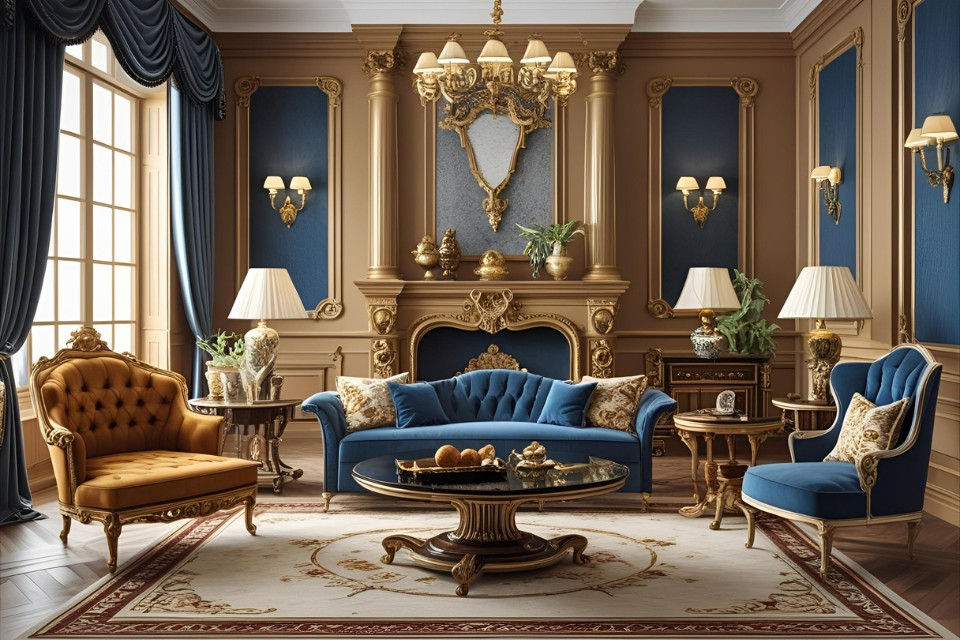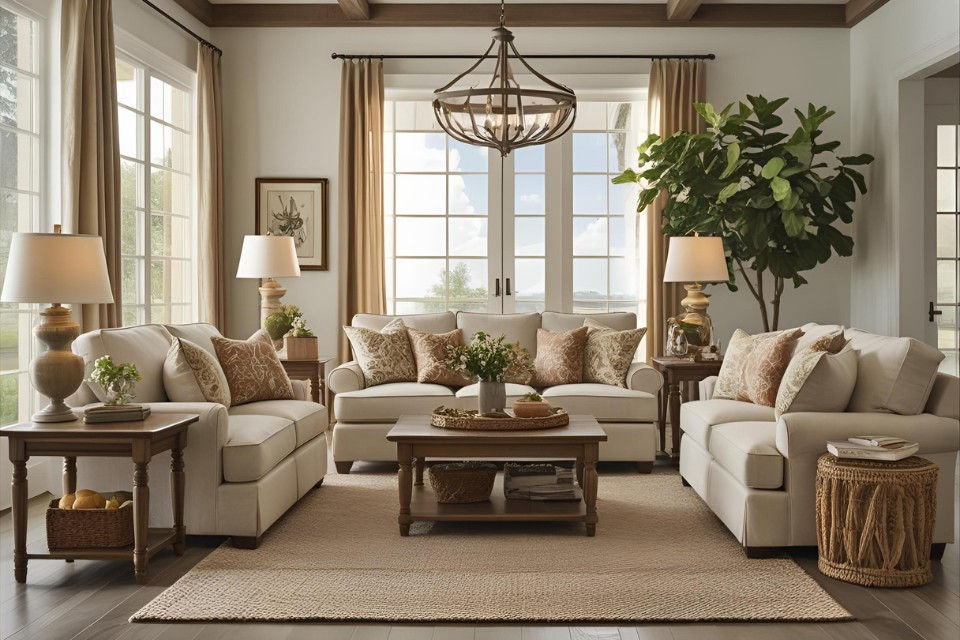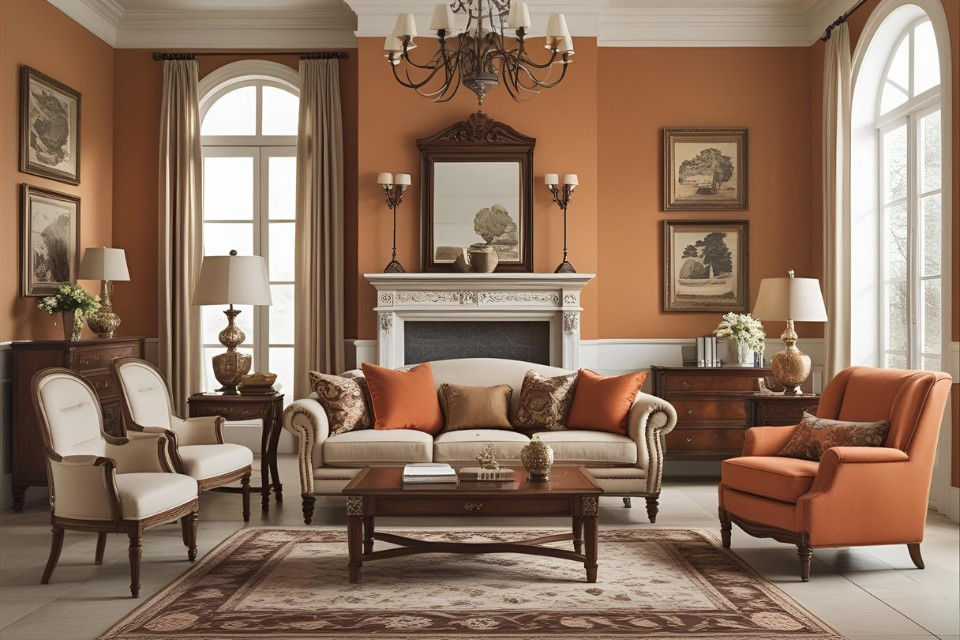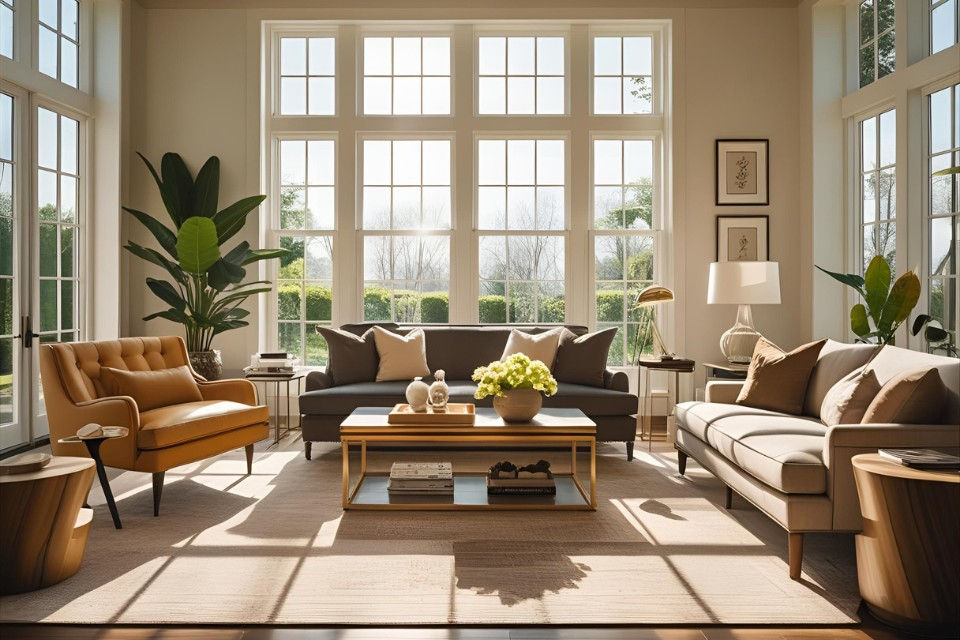Balancing Formal and Casual Furniture: Easy Design Tips
- Home2decor

- Jul 10
- 10 min read
How to Blend Formal and Casual Furniture – Mumbai Interior Designers' Top Tips
Introduction to Furniture Styles
When designing a living space, the choice of furniture style plays a critical role in defining the overall ambiance of the home. Furniture styles largely fall into two categories: formal and casual. Formal designs often embody elegance and sophistication, featuring clean lines, rich materials, and a sense of grandeur. Pieces in formal styles typically include ornate details, polished finishes, and a structured layout, which makes them suitable for spaces intended for entertaining or occasions where a polished aesthetic is desired.
On the other hand, casual furniture styles prioritize comfort and relaxation. These designs incorporate softer textures, inviting shapes, and a less rigid arrangement, promoting an informal setting that encourages social interactions among family and friends. Casual furniture may feature earthy tones, plush cushions, and rustic or vintage touches that contribute to a warm and welcoming environment. Striking the right balance between formal and casual furniture can enhance both the aesthetic appeal and functionality of a space.
For residents of Mumbai, understanding the nuances of furniture styles can be particularly beneficial. Interior designers in Mumbai offer a wide array of options that reflect the city's vibrant culture while accommodating diverse preferences. From the best interior designers in Mumbai, one can find invaluable assistance in blending these styles harmoniously. Moreover, utilizing an interior designers in Mumbai list can help streamline the selection process, allowing homeowners to identify suitable professionals quickly.
Combining formal and casual elements thoughtfully ensures that a home achieves both sophistication and comfort, elevating the living experience. In conclusion, whether one prefers a polished look or a cozy atmosphere, knowing how to balance these two furniture styles will ultimately create a home that is both visually appealing and practical.
Understanding Formal Furniture

Formal furniture serves as a vital element in the realm of interior design, particularly in settings that demand an air of sophistication and elegance. Characterized by a range of features, formal furniture typically emphasizes quality materials, intricate designs, and a cohesive color palette that aligns with a more traditional aesthetic. The most common materials seen in formal furniture include hardwoods such as mahogany, oak, and walnut, often featuring polished finishes that enhance their natural beauty and durability. Upholstery fabrics are usually rich and refined, with options such as velvet, silk, or high-quality leather being prevalent, lending an atmosphere of luxury to the space.
In terms of design elements, formal furniture showcases intricate carvings, ornate embellishments, and symmetrical lines that communicate a sense of refinement and stability. Pieces such as wingback chairs, elegantly detailed dining tables, and elaborate cabinets are typical in formal settings. These attributes contribute to a structured ambiance, often making the furniture a focal point of the room. The color schemes employed in formal furniture also play an influential role, typically consisting of muted tones or jewel colors that evoke a timeless appeal. Neutral shades such as cream, taupe, and grey provide a canvas that complements rich hues like deep reds, blues, and greens, creating a harmonious environment.
The emotional and aesthetic impact of formal furniture in living spaces cannot be overstated. Such pieces often instill a sense of dignity and significance, perfect for settings like dining rooms, libraries, or formal living areas. When thoughtfully curated, formal furniture enhances not only the beauty of the interiors but also the overall experience of spaces, inviting guests to feel a sense of warmth and grandeur. For those seeking expertise in selecting or arranging formal furniture, consulting with interior designers in Mumbai can be invaluable. An updated interior designers in Mumbai list can provide options tailored to individual needs, incorporating quality and design efficiency in achieving a sophisticated look.
Exploring Casual Furniture

Casual furniture represents a distinct branch of design that prioritizes comfort and relaxation, often characterized by an informal appeal. Unlike formal furniture, which tends to emphasize structure and elegance, casual pieces are more approachable and inviting. This type of furniture typically utilizes materials such as soft fabrics, wood with a weathered finish, and lighter metals, which create a more laid-back vibe. For instance, upholstered sofas with plush cushions can significantly enhance the comfort level in a living space, inviting family and friends to unwind.
The styles associated with casual furniture vary widely, ranging from rustic to contemporary, accommodating a multitude of tastes. Common design features include overstuffed seating, simple lines, and muted color palettes that all contribute to an easy-going aesthetic. The functionality of casual furniture also plays a vital role; modular sofas and flexible seating arrangements allow individuals to adapt their space according to need, aligning perfectly with the modern lifestyle focused on adaptability and comfort.
Another significant aspect of casual furniture is its contribution to fostering a relaxed and inviting atmosphere in a home. By incorporating casual elements, such as ottomans, bean bags, or slip-covered chairs, homeowners can create spaces that encourage social interactions and leisure. This approach aligns beautifully with the increasing popularity of open floor plans, where areas are designed to flow seamlessly into one another, promoting a sense of connection. In urban environments like Mumbai, where space can be at a premium, selecting the best interior designers in Mumbai who understand the balance between formal and casual styles is crucial. A comprehensive interior designers in Mumbai list can be a valuable resource for those seeking professional guidance.
Moreover, evaluating the cost associated with casual furniture can also lead to a more informed decision. Many interior designers in Mumbai with a price list can provide clarity on budget-friendly options without compromising on style or comfort. Overall, casual furniture serves as a foundational element in creating a harmonious and relaxed interior, making it a worthy consideration for any residential design project.
The Benefits of Mixing Styles

The integration of formal and casual furniture styles presents a multitude of benefits for both aesthetic appeal and functionality within various spaces. One significant advantage is the ability to establish a unique identity that reflects personal tastes while showcasing individuality. By blending formal elements, such as elegantly structured chairs, with more relaxed and cozy sofas or coffee tables, one can create an inviting environment that feels both curated and lived-in.
In addition to promoting a distinctive atmosphere, the combination of styles enhances comfort levels in social spaces. Casual furniture often prioritizes comfort, allowing individuals to relax while entertaining guests. This approach encourages a welcoming environment, making it easier for hosts and guests to engage in conversations without the constraints of overly formal surroundings. Thus, mixing different styles can lead to enjoyment and foster connection, making it particularly beneficial in residential settings.
Another key benefit is the promotion of inclusivity through versatile designs. When formal and casual furniture pieces coexist harmoniously, it makes the space accessible to a wider range of preferences and age groups. For example, families with children may find that incorporating both styles is practical, as durable, casual furniture complements the polished appearance of formal pieces without sacrificing ease of use.
Furthermore, various design philosophies support this mixing approach. Eclectic design, for instance, embraces a combination of different styles to create a cohesive, yet personalized space. Similarly, the transitional style merges traditional and contemporary elements, allowing for a cohesive blend of formal and casual furniture. Ultimately, integrating diverse styles leads to a well-rounded aesthetic that caters to both form and function, while allowing for an engaging and versatile living environment.
Key Tips for Achieving Balance

Balancing formal and casual furniture can be a rewarding endeavor, resulting in a visually appealing and functional living space. To achieve this harmonious blend, there are several key tips to consider. Firstly, color coordination plays a vital role. It's essential to choose a color palette that complements both formal and casual elements. Neutral tones can bridge the gap between these styles, while pops of color may accentuate the space, creating a dynamic environment.
Scale and proportion are crucial aspects of balanced design. When combining various pieces, ensure that they share a sense of scale. For instance, a large, striking formal sofa can be paired with smaller, casual accent chairs to prevent the room from feeling disproportionate. This strategic combination can create visual interest while maintaining comfort. Ideally, the furniture should not overpower the room or one another, leading to an inviting and cohesive space.
Creating focal points is another effective way to achieve balance. Identify key areas in your home, such as a living room or a study, and style them with a mix of furniture. For instance, place a formal coffee table at the center, surrounded by more casual seating. This setup creates an engaging focal point while allowing for flexibility and comfort in the seating arrangement.
Moreover, maintaining harmony throughout different areas of the home is essential. Even if each room showcases a unique combination of formal and casual furniture, there should be a consistent theme or style tying them together. This could be achieved through repeated use of colors, textures, or materials, ensuring that the overall design feels intentional and cohesive.
For those seeking guidance, consulting the best interior designers in Mumbai can provide tailored strategies and insights for effective balance in your home design. By leveraging their expertise and experience, you can access comprehensive interior designers in Mumbai with a price list to fit various budgets, ensuring a well-balanced and stylish living space.
Choosing the Right Color Palette

Color plays a critical role in interior design, serving not only as an aesthetic choice but also as a means to integrate various styles of furniture. When harmonizing formal and casual furniture, selecting the right color palette can create a seamless transition between the two styles. One effective approach is to focus on a cohesive palette that blends both styles through color selection.
Neutral colors serve as a common ground, providing an ideal backdrop that minimizes visual conflict. Shades such as beige, gray, and soft whites are often favored by interior designers in Mumbai for their versatility and ability to evoke a sense of calm. These base hues can be complemented by accent colors that reflect personal style; for example, incorporating rich jewel tones or pastel shades can add character to the space while still maintaining an air of sophistication.
Texture also plays a vital role in creating contrast and depth within a room. Combining various materials—such as sleek leather, soft fabrics, or weathered wood—not only highlights the uniqueness of each piece but also enhances visual interest. Using different textures in a cohesive color palette can promote balance, allowing formal pieces to coexist with more relaxed elements effectively.
Interior designers in Mumbai often emphasize the importance of layering colors and textures for a well-rounded design. This can involve various strategies such as using colorful throw pillows on formal seating or introducing handcrafted accessories that echo casual themes. Such thoughtful arrangements contribute to an inviting atmosphere while allowing each piece, whether formal or casual, to shine.
Overall, integrating a suitable color palette that incorporates neutrals and tactile contrasts is essential for achieving harmony between formal and casual furniture. By following these guidelines, one can create a cohesive design that exemplifies both functionality and refinement.
Incorporating Accessories and Textiles

The careful selection of accessories and textiles can effectively bridge the gap between formal and casual furniture, creating a harmonious and inviting space. Cushions play a vital role in this process; by choosing cushions with varied textures, colors, and patterns, one can soften the lines of structured formal furniture while adding layers of comfort. Selecting a mix of sizes and shapes allows for a relaxed aesthetic while complementing the existing furniture style.
Rugs are another critical element in achieving the desired balance. A well-chosen area rug can unite different furniture pieces, providing a visual base for the room. Consider rugs with intricate patterns or warm hues to contrast the sleek lines of formal seating or tables, thus achieving a comfortable and welcoming atmosphere. The size of the rug is equally important; it should be large enough to anchor the furniture, yet allow some space for the flooring to peek through, maintaining an open feel.
Curtains or drapes further add sophistication and warmth to a room. Opting for light, airy fabrics can enhance a casual feel, whereas heavier, richer materials might resonate better with formal pieces. Layering sheer curtains with heavier drapes also provides versatility, allowing one to shift aesthetics from formal to relaxed with ease using the same foundational elements.
Artwork and decorative accessories can serve as the finishing touches, exhibiting personal style while bridging different design languages. Select artwork that holds sentimental value, or incorporate sculptures and decorative objects that spark joy. The goal is to create a dialogue between formal and casual elements, ensuring that each piece serves a purpose without overshadowing others. By incorporating these textiles and accessories, individuals can seamlessly blend interior design styles, ultimately leading to a cohesive yet dynamic living space.
Maintaining Functionality and Comfort

When it comes to interior design, particularly in the vibrant city of Mumbai, achieving a balance between formal and casual furniture styles is essential. While aesthetics play a crucial role, prioritizing functionality and comfort ensures that the space remains usable and inviting. This is particularly vital for homeowners who wish to entertain guests or create a family-friendly environment that caters to everyday living.
To effectively combine formal and casual elements, it is important to select pieces that serve a dual purpose. For instance, consider investing in a luxurious sofa that offers both style and comfort. Look for options that provide ample seating without compromising on the visual appeal. This approach is echoed by the best interior designers in Mumbai, who often recommend furniture that enhances the room's aesthetic while fulfilling practical needs.
Moreover, when choosing furniture, think about the layout and flow of the space. Ensure that pathways are clear and that each piece complements the others. For example, pairing a formal dining table with casual upholstered chairs can create an inviting yet sophisticated dining experience. Recognizing the importance of each piece's function aids in transforming your living area into a coherent space where different styles can coexist comfortably.
Additionally, consider the materials and textures of your furniture selections. A cohesive blend of fabrics can bridge the gap between formal and casual styles. For instance, incorporating plush throws or decorative cushions can soften the look of more rigid furniture, creating an inviting atmosphere that welcomes both formal dinner parties and casual family gatherings.
Ultimately, collaborating with the interior designers in Mumbai can provide expert insight and access to an interior designers in Mumbai list that showcases professionals adept at blending styles effectively. By focusing on functionality and comfort alongside aesthetics, homeowners can create beautiful, livable spaces that reflect their personal taste and lifestyle.
Real-Life Examples and Inspirations

The harmonious blending of formal and casual furniture is successfully illustrated through various real-life examples and case studies across diverse settings. One notable example can be found in a contemporary Mumbai apartment designed by renowned interior designers in Mumbai. The living room features a sophisticated, tailored sectional sofa paired with eclectic, casual accent chairs. This combination not only invites comfort but also allows for an engaging space where formal hosting can occur without the stifling atmosphere often associated with traditional designs.
Another case study worth exploring is a beachfront villa that embodies a laid-back yet elegant aesthetic. The space is outfitted with luxurious formal dining tables juxtaposed with casual wicker chairs. This thoughtful pairing demonstrates how interior designers in Mumbai effectively utilize materials that reflect the natural beauty of the surroundings while maintaining a graceful balance. By integrating subtle design elements, such as decorative throw pillows and vibrant table settings, this villa radiates an inviting atmosphere perfect for family gatherings and intimate dinners alike.
Additionally, many best interior designers in Mumbai emphasize the importance of personal stories in home design. For instance, one creative individual successfully merged heirloom formal furniture with contemporary, casual pieces that reflect her family's journey. The juxtaposition of a classic wooden buffet against modern art prints and casual seating showcases the endless possibilities of design. This melding of styles invites discussion and connection, ultimately reflecting the homeowner’s personality while ensuring functionality.
Overall, these examples illustrate the transformative power of careful design considerations. By examining the interior designers in Mumbai list and taking cues from successful projects, anyone looking to create a space that balances formal and casual elements can find inspiration that suits their unique taste and lifestyle.






Comments